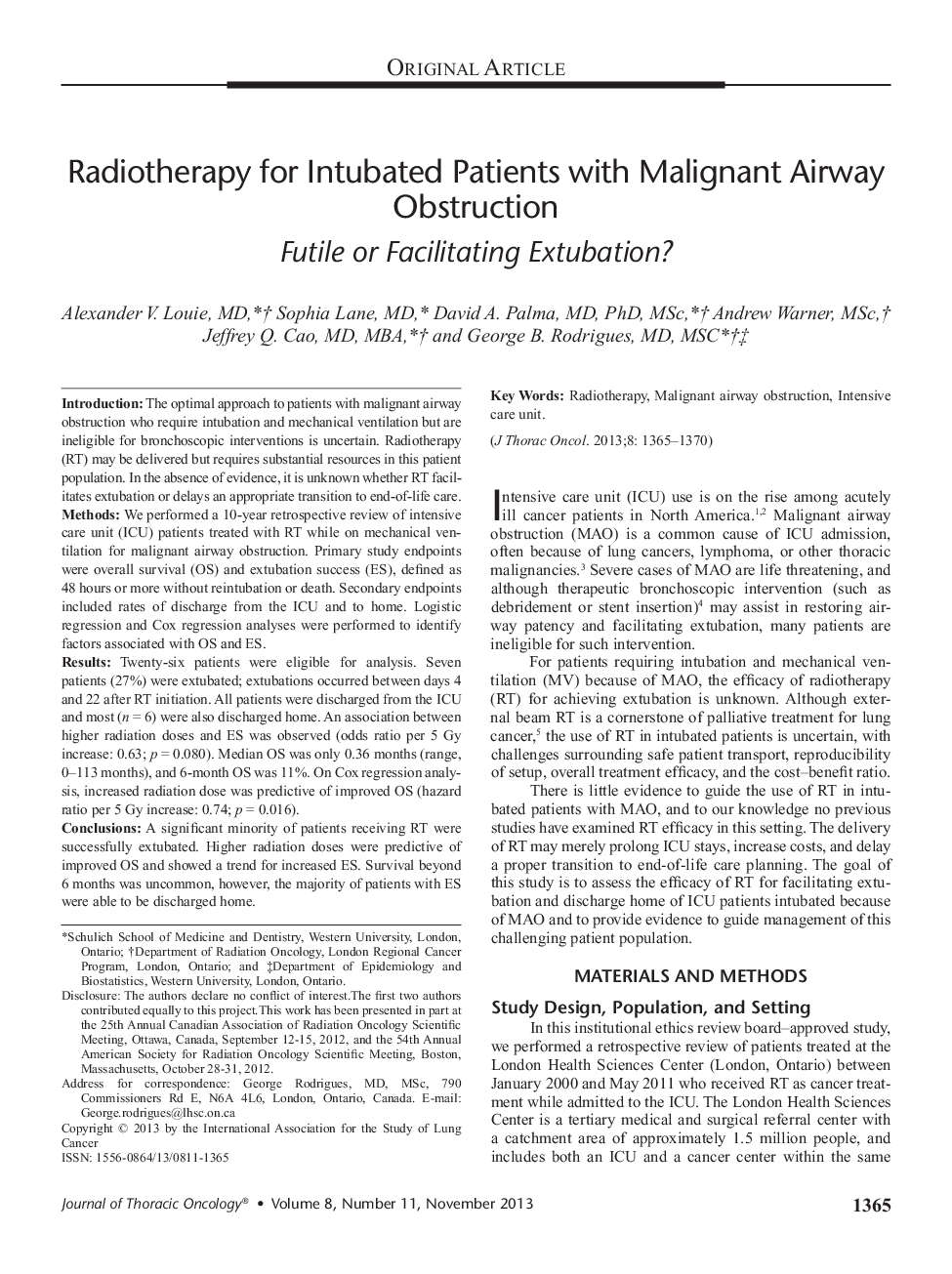| Article ID | Journal | Published Year | Pages | File Type |
|---|---|---|---|---|
| 3989950 | Journal of Thoracic Oncology | 2013 | 6 Pages |
IntroductionThe optimal approach to patients with malignant airway obstruction who require intubation and mechanical ventilation but are ineligible for bronchoscopic interventions is uncertain. Radiotherapy (RT) may be delivered but requires substantial resources in this patient population. In the absence of evidence, it is unknown whether RT facilitates extubation or delays an appropriate transition to end-of-life care.MethodsWe performed a 10-year retrospective review of intensive care unit (ICU) patients treated with RT while on mechanical ventilation for malignant airway obstruction. Primary study endpoints were overall survival (OS) and extubation success (ES), defined as 48 hours or more without reintubation or death. Secondary endpoints included rates of discharge from the ICU and to home. Logistic regression and Cox regression analyses were performed to identify factors associated with OS and ES.ResultsTwenty-six patients were eligible for analysis. Seven patients (27%) were extubated; extubations occurred between days 4 and 22 after RT initiation. All patients were discharged from the ICU and most (n = 6) were also discharged home. An association between higher radiation doses and ES was observed (odds ratio per 5 Gy increase: 0.63; p = 0.080). Median OS was only 0.36 months (range, 0–113 months), and 6-month OS was 11%. On Cox regression analysis, increased radiation dose was predictive of improved OS (hazard ratio per 5 Gy increase: 0.74; p = 0.016).ConclusionsA significant minority of patients receiving RT were successfully extubated. Higher radiation doses were predictive of improved OS and showed a trend for increased ES. Survival beyond 6 months was uncommon, however, the majority of patients with ES were able to be discharged home.
